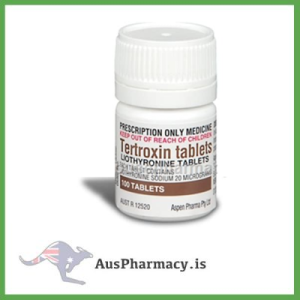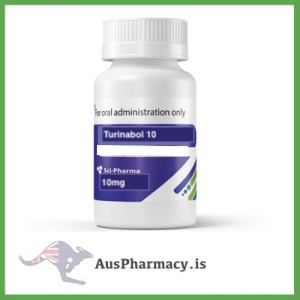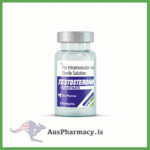Sci-Pharma Nolvadex 20mg x 30 Tamoxifen Citrate, most common known as Nolvadex is one of the most popular SERM’s any performance enhancer will ever use and as such Nolvadex PCT use remains the most common purpose. Post Cycle Therapy (PCT) is a very important part of the anabolic steroid plan as this is the period after use is discontinued that allows the body to normalize; an important factor in maintaining good health as well as protecting gains made while on cycle. A plan based on a Nolvadex PCT can readily and efficiently produce the desired end very thoroughly and make ones experience not only more enjoyable but more effective as well.
Active Life- 5-7 days
Recommended Administration-
For PCT – 20mg Daily during PCT (HCG & Clomid should also be used during a PCT for best results)
To treat Gynocomastia (Gyno) – 40mg per day until it clears.
Nolvadex 20 mg, known chemically as Tamoxifen Citrate, is an important model compound in endocrine pharmacology education. Produced by Sci-Pharma for academic study, it illustrates the biological principles of selective estrogen receptor modulation (SERM)—a mechanism central to hormone-dependent signaling and therapeutic research.
In pharmaceutical and biomedical courses, Nolvadex provides a case study for how receptor selectivity, molecular design, and hormone feedback control can alter physiological responses and cellular outcomes.
2. Chemical Identity and Background
-
Chemical Name: (Z)-2-[4-(1,2-diphenyl-1-butenyl)phenoxy]-N,N-dimethylethanamine citrate
-
Molecular Formula: C26H29NO·C6H8O7
-
Drug Class: Selective Estrogen Receptor Modulator (SERM)
-
Molecular Weight: 563.6 g/mol
Tamoxifen was first synthesized in the 1960s as part of a research program investigating estrogen receptor antagonists. Its unique ability to act as both an estrogen receptor blocker and partial agonist makes it a vital learning model in pharmacodynamics.
3. Educational Value of SERMs
In an educational setting, Tamoxifen serves as a core example of how ligand–receptor interactions can vary by tissue type.
Key teaching points include:
-
Differential activation of estrogen receptors (ERα and ERβ)
-
Tissue-specific modulation (agonism in bone, antagonism in breast tissue)
-
Transcriptional co-activator/co-repressor involvement
-
The relationship between receptor binding and gene expression regulation
Students studying molecular biology and pharmacology learn how one compound can produce contrasting physiological effects in distinct tissues.
4. Mechanism of Action
Tamoxifen binds to estrogen receptors and blocks the natural hormone’s ability to activate them fully.
Mechanistically:
-
Tamoxifen competes with estradiol for receptor sites.
-
Once bound, it induces a conformational change in the receptor.
-
This change prevents co-activator proteins from attaching.
-
As a result, estrogen-dependent genes remain inactive or are only partially expressed.
This selective modulation provides a rich educational model for discussing nuclear receptor pharmacology, transcriptional control, and signal transduction.
5. Pharmacokinetics and Metabolism
From a pharmacological education viewpoint, Nolvadex demonstrates essential ADME concepts:
-
Absorption: High oral bioavailability
-
Distribution: Extensively protein-bound, large volume of distribution
-
Metabolism: Converted in the liver (CYP2D6, CYP3A4) into active metabolites such as endoxifen and N-desmethyl-tamoxifen
-
Elimination Half-Life: Up to 7 days for active metabolites
These parameters help students connect drug chemistry with duration of action and steady-state concentrations.
6. Structure–Activity Relationship (SAR)
In medicinal chemistry courses, Tamoxifen’s triphenylethylene backbone serves as a classic example of receptor-binding design.
SAR teaching points include:
-
The importance of hydroxyl groups for estrogenic activity
-
The effect of side-chain amines on receptor antagonism
-
How isomerism (E/Z) influences biological activity
This molecular study reinforces the principle that minor structural changes can dramatically affect pharmacological properties.
7. Applications in Academic and Research Contexts
Sci-Pharma Nolvadex 20 mg is used for:
-
Demonstrating receptor-ligand binding assays
-
Modeling gene expression studies in molecular biology labs
-
Teaching drug metabolism and biotransformation
-
Exploring clinical pharmacology concepts like selective tissue targeting
Educational laboratories often use Tamoxifen to simulate endocrine feedback regulation or pharmacogenetic variability.
8. Endocrine System Relevance
Nolvadex plays a major role in explaining hormone-receptor feedback loops:
-
Interaction between the hypothalamus, pituitary, and gonads
-
Estrogen’s role in negative feedback regulation
-
How SERM activity can modulate hormone synthesis indirectly
This section is often integrated into medical physiology and pharmacology lectures to illustrate hormonal homeostasis.
9. Educational Comparison with Other SERMs
| Compound | Activity | Tissue Selectivity | Duration |
|---|---|---|---|
| Tamoxifen (Nolvadex) | Partial agonist/antagonist | Breast, Bone | Long-acting |
| Raloxifene | Antagonist | Bone, Uterus | Moderate |
| Clomiphene | Partial agonist | Ovary | Short-acting |
Students can observe how chemical diversity among SERMs influences both clinical use and research value.
10. Biochemical Signaling and Gene Regulation
Nolvadex provides a vivid example of ligand-induced gene regulation.
Once bound to estrogen receptors, it influences transcription through:
-
DNA-binding domain modulation
-
Recruitment or inhibition of transcriptional co-factors
-
Alteration of mRNA expression levels
These processes help students understand how drugs can modify genetic expression indirectly through receptor-mediated control.
11. Ethical and Safety Considerations
In academic institutions, Tamoxifen is handled following strict educational and laboratory safety protocols:
-
Use limited to authorized research or teaching environments
-
Compliance with ethical standards and local regulations
-
Proper chemical handling and waste disposal procedures
This reinforces responsible conduct in pharmaceutical education and scientific experimentation.
12. Historical Perspective
Discovered during estrogen receptor research in the 1960s, Tamoxifen reshaped the understanding of receptor selectivity.
Its development marked a pivotal shift in:
-
How receptor pharmacology was conceptualized
-
The role of molecular modeling in drug design
-
The application of targeted therapy principles
Students studying drug discovery learn that Tamoxifen exemplifies the evolution from broad-spectrum agents to mechanism-specific modulators.
13. Practical Use in Academic Demonstrations
Educators use Sci-Pharma Nolvadex 20 mg to:
-
Illustrate dose–response relationships
-
Conduct enzyme kinetic modeling
-
Simulate clinical case studies for pharmacotherapy training
-
Compare receptor antagonism using computational docking
These activities bring theoretical pharmacology to life through hands-on analysis and visual modeling.
14. Integration in Pharmaceutical Curriculum
Tamoxifen studies can appear in multiple academic disciplines:
-
Medicinal Chemistry: structure–activity design
-
Molecular Biology: receptor-gene interaction
-
Pharmacology: dose, metabolism, feedback
-
Clinical Education: understanding therapeutic modulation
Its interdisciplinary role reinforces the connection between chemistry and biology.
15. Conclusion
Sci-Pharma Nolvadex 20 mg (Tamoxifen Citrate) stands as a cornerstone educational compound for understanding selective estrogen receptor modulation.
From molecular binding and gene regulation to endocrine system dynamics, it provides students with a comprehensive framework for receptor pharmacology and biochemical signaling.
By studying Nolvadex, learners appreciate how precision drug design and tissue-specific receptor control define modern pharmacology and therapeutic innovation.









